Aluminium, zinc, copper, steel, etc are common materials used in casting. Particularly, modern manufacturers prefer aluminium. This is because of its excellent features such as corrosion resistance, lightweight, etc.
There are different aluminium alloys. And so you may be curious to know which could be the best among them. Well, calm your nerves! That’s exactly what we will show you here.
Is there any best alloy out of all the aluminium alloys? You will get to find out in this article. Follow closely.
What is aluminium?
Aluminium is a silver-white metallic chemical element that has good electrical and thermal conductivity. It has high reflectivity and is reactive to oxidation. So, it is not susceptible to rust.

It is also lightweight. It has a solid, non-magnetic, non-lustrous appearance. It has a face-centred cubic structure that is stable up to the melting point. Aluminium has high malleability as you can easily bend and shape it.
Aluminium is the most widespread metal on earth. It constitutes over 8% of the earth’s core mass. It is also the third most common element on the earth. It occurs as a compound and mainly found in bauxite ore.
What is aluminium alloy?
When you add other elements (in little quantities) such as copper, manganese, zinc, silicone, etc to aluminium, what you have is aluminium alloy. Combining different elements with aluminium improves the alloy properties.
Different combinations of these elements result in various kinds of alloys, each with its distinct features. So, there are various types of alloys with various features. However, in all aluminium alloys, aluminium is the dominant element.
What is aluminium casting?
This is an automated process whereby you press aluminium alloy into a mold under high pressure and at a high speed. After solidification, you will remove the casting from the mold.

The process involved in aluminium casting includes mold preparation, making of the gating system, lubrication of the internal surface, injection of the molten aluminium metal, solidification, removal of the casting, machining, finishing, etc.
The various methods of casting aluminium include pressure die casting, gravity die casting, investment casting, sand casting, centrifugal casting, vacuum die casting, lost foam casting, etc.
Common aluminium alloys used in casting
There are hundreds of aluminium alloys. The common aluminium alloys used in casting include aluminium alloy 380, 383,1100, 3003, 3004, 3105, 5052, 360, 413, 390, 6061 etc. Some of these alloys shall be considered subsequently.
• A380: This has a density of 27/g/cm³. Its thermal conductivity is almost 96 W/m-k. Also, its electrical conductivity is 23%. It has exceptional resistance to cracking, fluidity and pressure tightness.
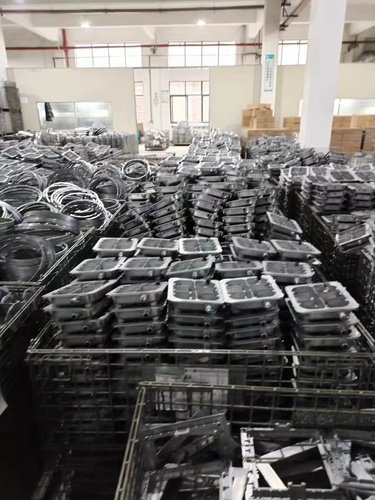
This is one of the commercial alloys that are easily heat treatable. It has elastic modulus of around 70:GPa. So, it has almost one-third of other conventional alloys elastic modulus.
It has a yield strength of 23kg. As a high-temperature alloy, this alloy can withstand temperatures of around 300°c. It has excellent fluidity and pressure tightness.
This alloy can withstand more extreme operational temperatures than most other metal alloys. It can retain high dimensional stability having thin walls. It can also impend dislocation motion.

Aluminium alloy 380 consists of various elements such as copper, zinc, iron, nickel and magnesium. Because of the copper element in the alloy, it responds better to thermal treatment. The zinc element enables the aluminium to have high abrasive wear resistance, and improved castability and strength.
Addition of iron makes the aluminium hot-tear resistant. It also reduces soldering and die-sticking tendencies.
Nickel increases the alloy strength at elevated and room temperature. It also enhances the hardness and strength of alloys. Magnesium acts as the source of hardness and strength in aluminium alloys.

A380 is resistant to cracking under heat. It is perfect for components that enhance die-filling characteristics. Also, it is easy to cast and it holds dimensional stability. This alloy has good machinability. This is because it has higher silicon and lower copper levels.
• A383: This is also one of the common aluminium casting alloys. It has lower copper and higher silicone levels.
A383 is quite more corrosion-resistant and hot-tear resistant than A380. Also, A383 has improved fluidity and strength at elevated temperatures.
It has a yield strength of 22(152) ksi. The Brinell hardness of this aluminium alloy is set at 75. This makes it a very hard alloy.

It has an electrical resistance of 0.00000750 ohm-cm. Its specific heat capacity is 0.963 j/g°c. The melting point of this alloy ranges between 516 and 582 degrees centigrade. Its highest temperature in solid state is 5/6 degrees centigrade.
Aluminium alloy 383 is capable of elongation at 3.5%. Also, it has a modulus of elasticity at 10.3 pain 10^6. It has a density of 274 grams per cubic centimetre.
You can use it to manufacture cast parts for applications requiring lots of strength to support heavy structures.
Although this alloy is not durable as the A380. However, you can use it to form intricate components with specific die-filling characteristics. It is quite cost-effective. Averagely, the cost of A383 is around 2-3 dollars per kilogram.
The different metals that make up aluminium alloy 383 are aluminium, zinc, silicon, manganese, iron, magnesium, copper, and aluminium.
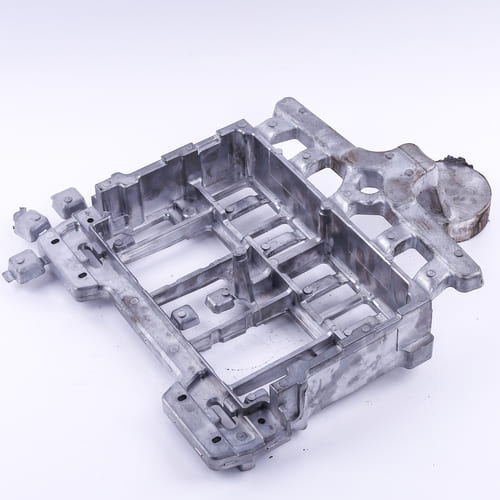
• A1100: This is one of the softest alloys used in casting. It does not harden like other forms of metals. Though, it is resistant to rust.
A1100 is a non-heat-treatable and extremely malleable alloy. It has low strength and is not suitable for high-strength or high-pressure applications.
This alloy has a minimum of 99.0% aluminium. This makes it the most heavily alloyed of the 1000 series. It contains a little composition of iron, copper, manganese, silicon, and zinc.
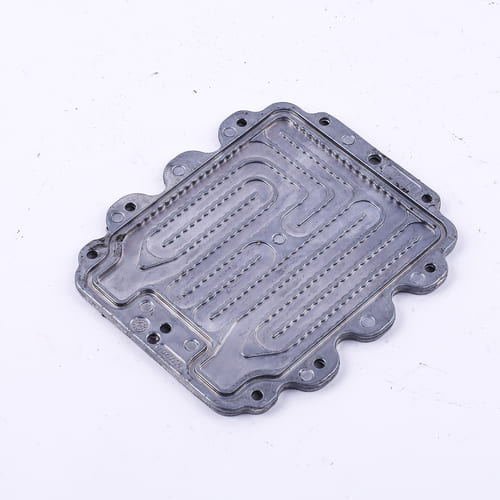
It is sensitive to high temperatures, ranging between 200-250°c. You can only heat-treat this alloy by producing the annealing form and ‘0’ temperature.
Aluminium alloy 1100 is suitable for applications requiring bending, spinning, drawing, stamping and roll farming. Also, you can shape it into different products.
These products include chemical equipment, railroad tank, rivets, cooking utensils, sheet metals, etc
A1100 is mostly used for electrical work, food and chemical handling, lighting, spun hollow ware, dials and nameplate.
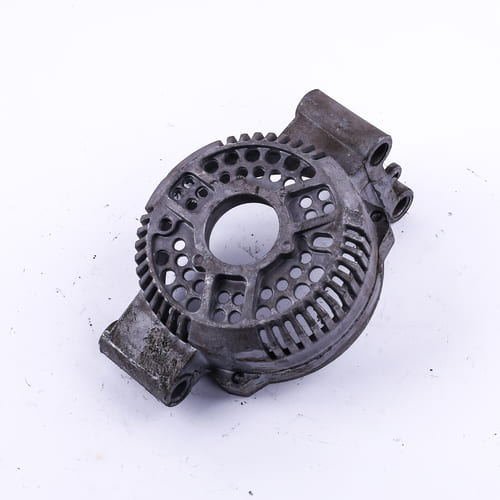
• A3003: Given that other alloying elements (other than aluminium) takes less than 4%, A3003 is a wrought alloy.
This alloy comprises elements which are aluminium, iron, copper, manganese, zinc and silicone. It contains 96-99% aluminium. Other elements share the remaining fraction.
It is a practical general-purpose aluminium for moderate-strength applications. You can weld and braze it by all methods.
Unlike some other types of aluminium alloys, you can cold-work A3003 to produce tempers with a higher strength but a lower ductility.
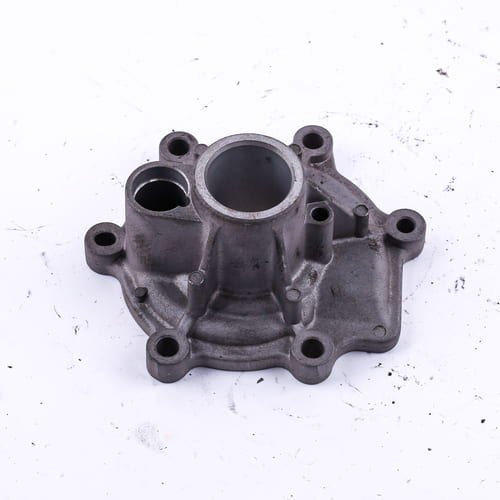
• A3105: This alloy contains 98% aluminium. It is non-heat treatable. Though A3105 has slightly higher strength than A3003, they both have similar features.
A3105 has excellent corrosion resistance, formability and welding characteristics. It has a tensile strength of 97 Mpa. It has a thermal conductivity of 173 W/mk and average machinability.
It is mostly used to manufacture parts for less critical building applications such as roofing, siding, etc. You can harden this alloy by cold working in H12, 13, 15, 18 or 25 tempers. It is annealed at 343°C and then cooled in air.
Aluminium alloy 3105 has good weldability. You can forge it at a temperature ranging friend 372° to 512°C.

• A6061: It is one of the commonest alloys for extrusion. It has higher resistance, welding properties and strength. It is mostly used to manufacture products requiring a high level of wear and tear.
Aluminium alloy 6061 has high corrosion resistance. It has an ultimate tensile strength of almost 42,000 psi. It yields strength of almost 35,000 psi. It has an elongation of 8% to 10%, depending on the thickness of the inches. Although mold steel is harder than alloy 6061, it can flex under impact.
• A5052: This is one of the strongest non-heat treatable sheets and plates commonly used. It has good welding characteristics and drawing properties. It has medium static strength and high fatigue strength.
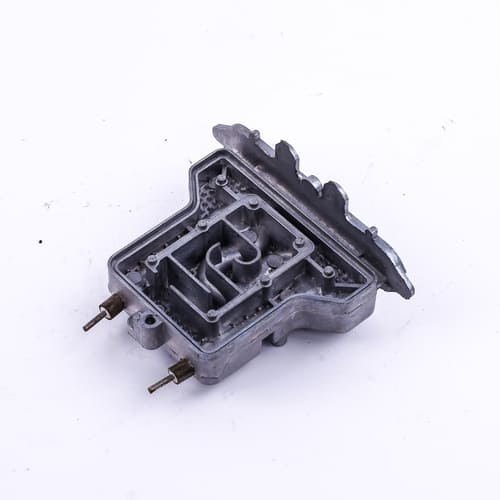
A5052 contains 97% aluminium, 2.5 magnesium and 0.25% chromium. It is suitable for making parts for the marine industry. This is because it is resistant to saltwater corrosion. It has a low density and excellent thermal conductivity.
• A3004: It is a general-purpose alloy with moderate strength, good workability and good corrosion resistance. It has a strength that is almost that of A5052.
The primary elements here are manganese and magnesium. This alloy is mostly used to manufacture beverage cans.
Which aluminium alloy is the best?
The best alloy for a cast production generally depends on the intended purpose of the cast parts. So, it is quite difficult to state that a particular alloy is the absolute best.
However, the most popular aluminium alloy used in die casting is A380. This alloy has excellent physical and mechanical properties such as lightweight, corrosion resistance, etc. It can perfectly retain dimensional stability; even with complex shapes as thin walls.

Note that:
• In choosing an alloy for your casting, consider the corrosion resistance, heat treatment, formability, machining, weldability, etc.
• There are some general-purpose alloys such as 3003, 5052, and 6061 alloys. However, before you opt for this, note that some alloys are suitable to produce cast parts for certain industries. For example, A5052 is suitable for making parts for the marine industry.
Conclusion
In die casting, it is important to choose the proper alloy. Before casting, determine your desired material properties for the cast parts you want to produce. This will guide you to choose the suitable alloy for your production.








